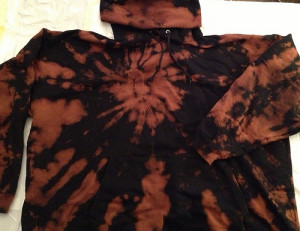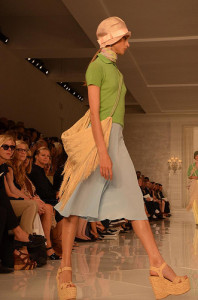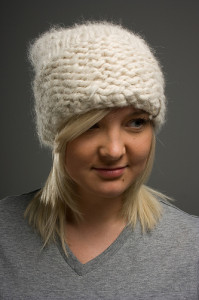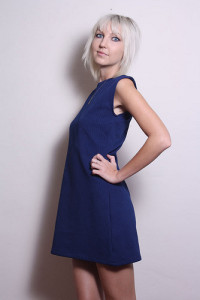 In a past blog post I wrote a blog about Tie Dye, and recently I discovered a technique for decorating shirts that is refereed to as reverse tie dye. Now I do own clothing items that are reverse tie dyed but I never recognized as this technique nor how it was created. So after discovering this I decided I must write a blog post to share my discovery with the world!
In a past blog post I wrote a blog about Tie Dye, and recently I discovered a technique for decorating shirts that is refereed to as reverse tie dye. Now I do own clothing items that are reverse tie dyed but I never recognized as this technique nor how it was created. So after discovering this I decided I must write a blog post to share my discovery with the world!
What is Reverse Tie Dye?
When you tie dye you add color to create design, so in the reverse we are technically removing color to create an interesting pattern and design. In order to do this you use bleach of the not color safe variety. You can use this technique on many different things, from t shirts and socks to sheets and pillow cases.
What You Need
-The first thing you need is something to reverse tie dye. An item made of cotton would work best, and it also needs to be dark in color to get the full effect.
-You’ll also need bleach, at most a few cups depending on the technique you choose and the size of your selected item.
-Since bleach is involved I would also suggest using gloves, and perhaps wearing a poncho or ratty apron to make sure no bleach splashes on your clothes. You should probably also wear ratty clothing…just in case.
-Depending on the technique you choose you will need either a spray bottle or bucket to use in a bleach safe area.
-The last thing you’ll need is some rubber bands to shape the item before bleaching, just like in tie dye!
Techniques
While research I came across two different techniques you can use to apply the bleach. But before using bleach everyone has the same basic idea for set-up, with a few variations of course. Just like with normal tie dye you need to roll, fold, and twist the item, or items, into a desired or interesting shape using the rubber bands before applying the bleach. Just like with tie dye the shape you take and where and how you apply the bleach will create and affect the design that is created.
After rubber banding the item(s) into a shape, it’s time to apply the bleach! The first technique I saw was using a spay bottle to spray the bleach, or a bleach water mixture, onto what you are reverse tie dying. Just be sure to mark it or clean out the spray bottle throughly so you don’t accidentally spray bleach somewhere you’d rather not spray it. The other technique is taking a part of the item, not the whole thing and dipping it in some bleach. This technique happens fast and as soon as there is a color you like, immediately transfer to a tub of water and wash the bleach out! No matter which technique you choose be sure to thoroughly rinse the item to get all of the bleach out. If you throw it in the washer, be sure to wash it by itself to avoid bleaching something else.
I’ve seen posts that suggest using vinegar with the item in the wash as a way to stop the bleaching process, but other say bleach and vinegar should not be mixed as it creates a toxic reaction. So if you use vinegar be sure ALL of the bleach is out or skip this step entirely.
For some more information on reverse tie dye check out these pages:
Until next time!

 paper it prints out a material in layers, creating a 3D object. People create computer drawings and models, which is then sent to the printer. The printer then lays down think layers of material using a laser. The printer builds the layers based on the specs in the models and drawings creating the desired object.
paper it prints out a material in layers, creating a 3D object. People create computer drawings and models, which is then sent to the printer. The printer then lays down think layers of material using a laser. The printer builds the layers based on the specs in the models and drawings creating the desired object. The Fall NY Fashion week has been going on for almost a week now, and it’s been very interesting to follow. While I’m not going there, traffic and crowds are probably a nightmare, I’ve been following online. Checking out the news, seeing pictures of collections, and connecting with others watching the event online as well.
The Fall NY Fashion week has been going on for almost a week now, and it’s been very interesting to follow. While I’m not going there, traffic and crowds are probably a nightmare, I’ve been following online. Checking out the news, seeing pictures of collections, and connecting with others watching the event online as well. There are so many different kinds and combinations of t shirts out there. I recently wrote a blog post on the different types of sleeves you can find on a t shirt. There are also many other aspects of a t shirt, like the neck or t shirt style and fit. Today I will be discussing some of the different necks on t shirts. When purchasing t shirts, the comfort around your neck is very important. Also, for women it’s important to stay within your comfort zone with how deep some necklines can be. Knowing the necklines that are comfortable to you will help you find the perfect one that much faster.
There are so many different kinds and combinations of t shirts out there. I recently wrote a blog post on the different types of sleeves you can find on a t shirt. There are also many other aspects of a t shirt, like the neck or t shirt style and fit. Today I will be discussing some of the different necks on t shirts. When purchasing t shirts, the comfort around your neck is very important. Also, for women it’s important to stay within your comfort zone with how deep some necklines can be. Knowing the necklines that are comfortable to you will help you find the perfect one that much faster. In a past blog post, I described and looked at bohemian fashion. Today, I will be look at another fashion trend, the Mod subculture and their fashion style. This style features form-fitting clothes, unisex styles for men and women, as well as bold patterns and colors.
In a past blog post, I described and looked at bohemian fashion. Today, I will be look at another fashion trend, the Mod subculture and their fashion style. This style features form-fitting clothes, unisex styles for men and women, as well as bold patterns and colors.